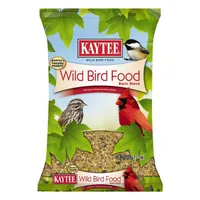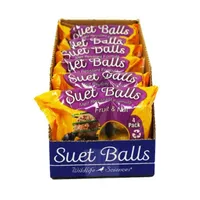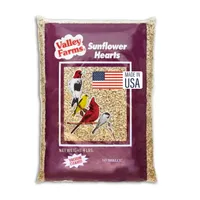Eight tips on what to feed birds from your garden
We explain what to feed birds from your garden (and how to avoid attracting pests).
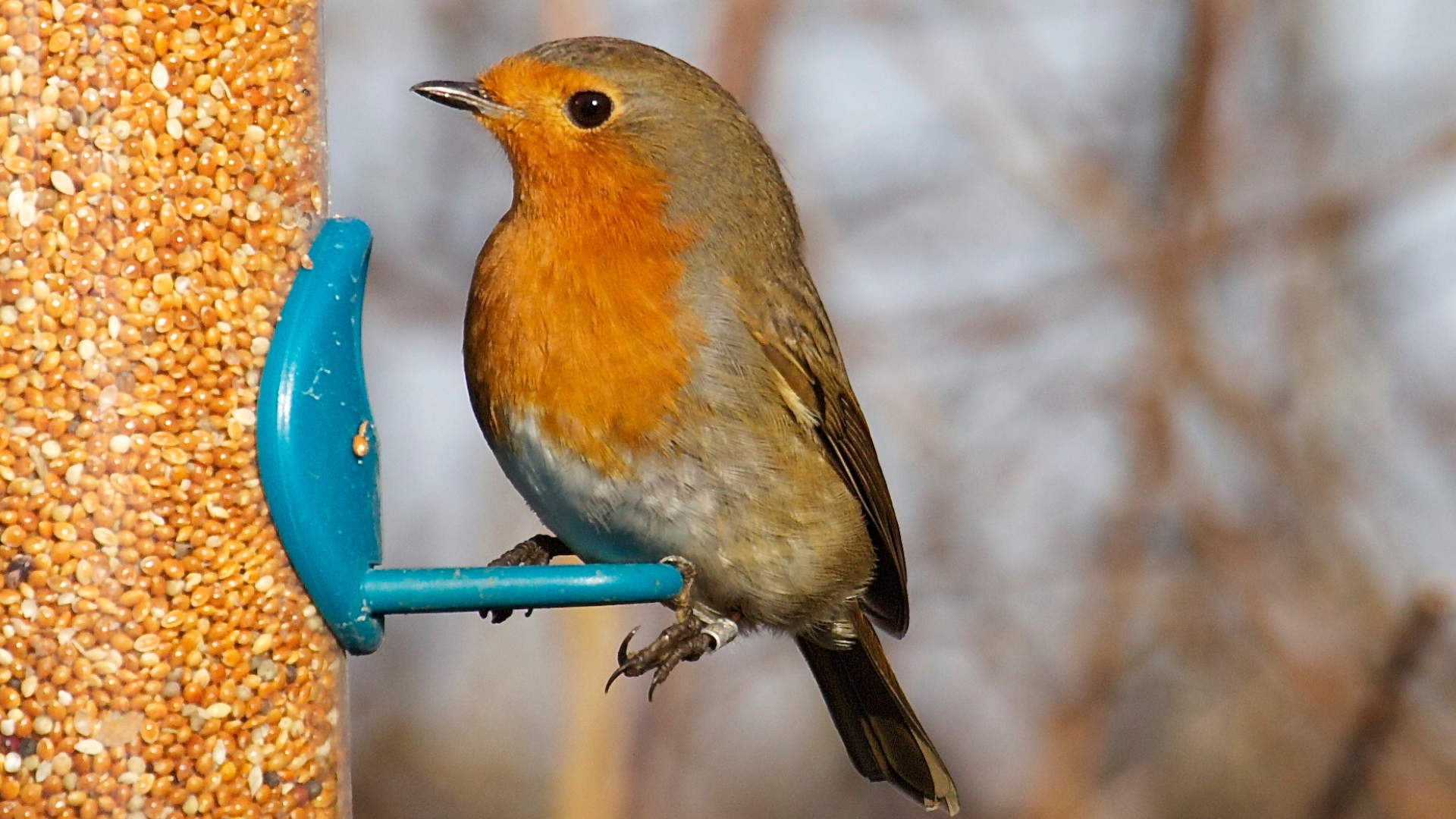
If you have a garden, then you might be wondering what to feed birds. It’s always a delight to spot our flying friends outside, so this is a great way to encourage them to pay us a visit. Not only is it a rewarding experience for us, but it also helps the birds through food shortages.
However, you can’t just feed them anything and you’ll need the best bird feeder to get started. If you’ve noticed their food is going missing, you might want to look into the best squirrel proof bird feeders instead. These need to be kept clean, hygienic, and free from pests (which we’ll get into later).
You might be tempted to feed them bread, but they actually need a highly nutritious diet to stay healthy. Below, we’ve listed eight foods that you can feed birds (aside from the best bird food), and how to avoid attracting pests into your garden.
We also have a brilliant expert's guide on what not to feed wild birds.
What to feed birds
1. Quality bird seed mix
Quality bird seed mixes are highly nutritious, and will attract different species to your garden. The best seed mixes contain the perfect combination of oil seeds and cereal grains which will provide plenty of energy. It’s best to buy an all-purpose mix that will typically include a variety of sunflower seeds, maize, rolled oats, pinhead oatmeal, millet, kibbled peanuts, and niger seed. Poor quality seed mixes contain mainly wheat and maize which are ‘bulking’ ingredients or ‘fillers’ such as split peas or dog biscuits that have no nutritional value.
Kaytee Wild Bird Food Basic Seed Blend
Containing black oil sunflower, cracked corn, millet, and milo, this healthy seed blend will attract a range of birds to your garden. Depending on where you live, you can expect cardinals, chickadees, mourning doves, juncos, towhees, sparrows, grosbeaks,
2. Mealworm
Get the best advice, tips and top tech for your beloved Pets
Mealworms are high-protein foods and can be given to insectivorous birds all year. Although experts advise that mealworms should be fed fresh, as dead mealworms can cause salmonellosis, you can buy high quality, dried mealworms. These are typically enjoyed by robins, blue tits, blackbird, dunnock, great tit, house sparrow, song thrush, starling, and wren. Mealworm is also ideal to offer during breeding season, but it’s advised to soak first to prevent baby birds from choking.
3. Suet and fat balls
Suet pellets, suet blocks and fat balls are ideal for hanging feeders. Suet provides a vital source of energy for them, particularly in the winter months. Popular amongst birds including blue tit, great spotted woodpecker, great tit, long-tailed tit, robin, starling and wren. You might want to learn how to make bird suet yourself.
Wildlife Sciences Fruit & Nut Suet Balls Wild Bird Food
These suet balls are a great source of energy for wild birds and contain raisins, peanuts, and berry flavoring. They can be fed to them all year round and attract various birds to your garden.
4. Peanuts
Peanuts are a great source of protein, however you have to be careful what type of peanut to give. It’s important the peanuts you give birds are labelled, ‘nil detextable aflatoxin rated. Aflatoxins are toxins found in peanuts and can be harmful to birds if ingested. Ensure the peanuts you buy are tested so they have no traces of aflatoxin. Never feed them salted, dry or roasted peanuts from your pantry.
5. Sunflower hearts
These are the hulled seeds of sunflowers and are loved in particular by finches. Sunflower hearts are a great source of vitamins, fat, protein and fiber, and since they have no hard shell, these are easier for the smaller birds to eat.
These high-quality sunflower hearts are baker’s grade - you won’t find any dust, shells, or waste seeds in the bag. They provide birds with essential vitamins, protein, fiber, and energy.
6. Raisins
Raisins are a good energy source for birds and are loved by robins and thrushes. Before you put them in your feeder, soak them overnight to make them soft. This also adds additional moisture, which is important during the breeding season. Bear in mind that raisins are toxic to dogs and cats, so this might not be the best choice if you have furry friends around!
7. Household scraps from the kitchen
Leftover food can be a much more practical (and cheaper!) option to feed garden birds. Plus, nothing will ever go to waste! While you should never offer cooked food, you can provide energy-fueled beef suet. It’s best to avoid raw meat and vegetables, which will be hard for birds to digest and will attract rodents. Potatoes and scraps of pastry are suitable for their high fat content. Grated cheese is a popular choice of food for robins, wrens, and dunnocks.
8. Fruits from the garden
Most gardens have bountiful, fruit trees and plant food sources to attract a variety of birds. Berry trees and shrubs such as holly, honeysuckle and ivy provides tasty fruit but they also provide the perfect shelter to nest and source insects. Popular fruits such as apples and pears are favored by starlings, thrushes and tits. Bear in mind that such fruits are harmful to cats and dogs so be aware if they are around the bird feeding station.
Fresh water to keep hydrated
Don’t forget to leave out a fresh supply of water every day for your feathered friends. If you don’t have a bird bath, use a large dish or upturned bin lid. Also, it’s best to use lukewarm water on colder days.
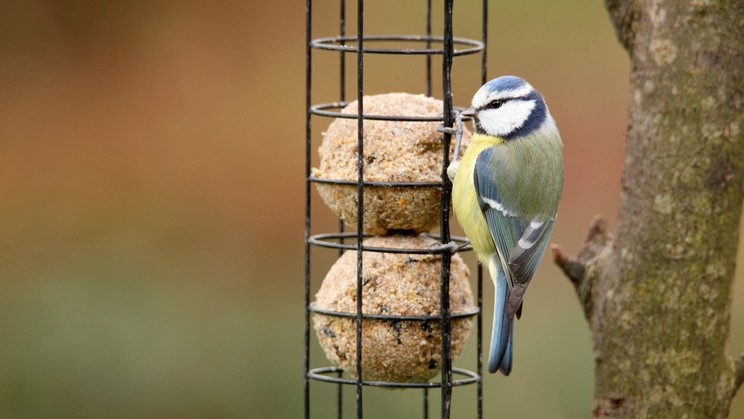
How do you feed birds in your garden without attracting pests?
Any bird food left on the ground overnight is bound to entice rats or pests. So only leave out a small amount of what gets eaten, always sweep up any leftovers on the ground, and empty water from bird baths. Typically, seed mix that has already been husked will leave less mess, but it’s also worthwhile to get a ‘pest-proof’ bird feeder.
Those with large seed ports may result in a lot of food falling to the ground when knocked so it’s better to have ones with smaller holes to create less spillages. Alternatively, fix a seed-catching tray on your bird-feeder pole to catch excess food.
Finally, make your feeding stations a ‘mission impossible’ for any unwanted visitors to get to. Squirrels and rats are good climbers, so it’s worthwhile strategically placing your bird feeders away from any branches, fences or poles that they can easily use to get to birds precious feed.
Found this helpful? You might also like to read: How to set up a birdcam and how to 32 nutritious things birds can eat besides bird food.
Cynthia Lawrence is freelance lifestyle journalist. Starting off her career in national magazines, she moved to digital and e-commerce publications. When she's not reviewing exciting products, she is obsessed with home interiors and her neighbour's cat!
- Megan MilsteadStaff Writer
